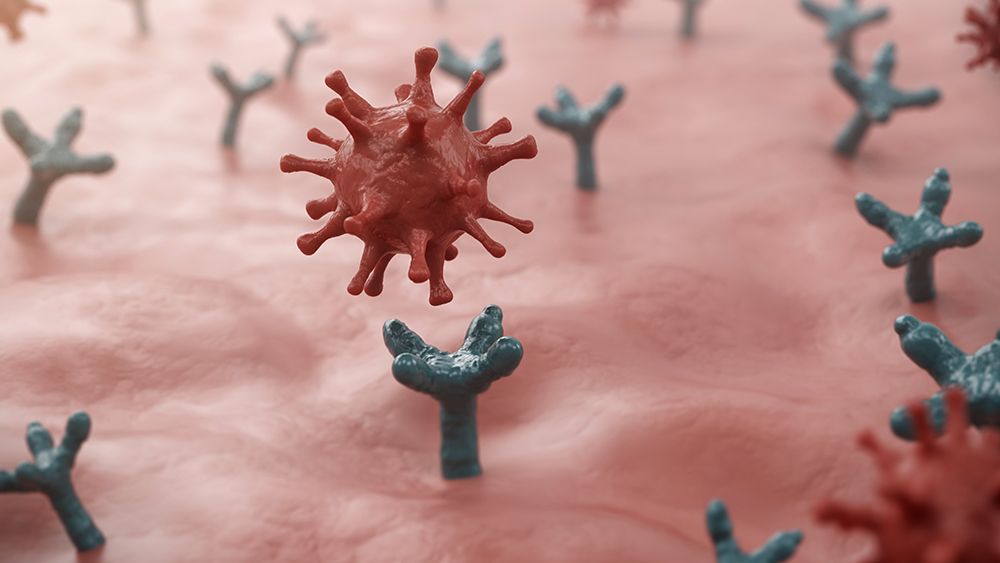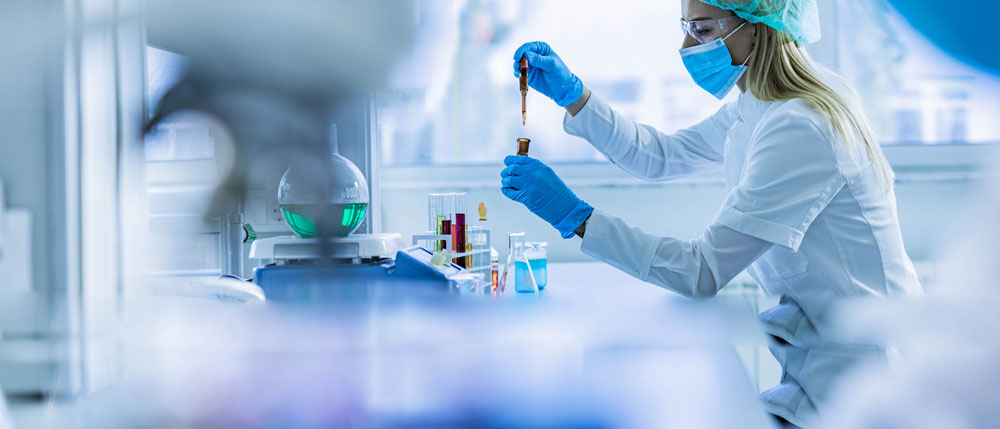
SARS-CoV-2 infects cells by attaching its spike proteins to ACE2 proteins that lie on the surface of the cells. Researchers are developing a “decoy” ACE2 to prevent SARS-CoV-2 from attaching to cells.

SARS-CoV-2 infects cells by attaching its spike proteins to ACE2 proteins that lie on the surface of the cells. Researchers are developing a “decoy” ACE2 to prevent SARS-CoV-2 from attaching to cells.
What you need to know
SARS-CoV-2, the virus that causes COVID-19, is covered in spike proteins. These spike proteins interact with a protein called angiotensin-converting enzyme 2 (ACE2) that sits on the surface of human cells. By attaching to ACE2, the virus can infect the human cells.
Because ACE2 does not change, the part of the spike protein that interacts with ACE2 is unlikely to change or mutate. This makes the development of “decoy” ACE2 proteins — proteins that bind to SARS-CoV-2 before it can attach to human cells — a promising target for new treatments.
In a study supported by the National Institute of Allergy and Infectious Diseases (NIAID), the National Institute on Drug Abuse (NIDA), and the National Cancer Institute (NCI), researchers made progress on a new way to deliver the decoys to provide long-term protection against SARS-CoV-2 infection.
What did the researchers do?
The researchers created a version of the ACE2 decoy connected to a common type of antibody that is involved in fighting SARS-CoV-2 and other viruses. After figuring out the genetic code that could be used to create the decoy-antibody combination, the researchers put the genetic code into a vector — an inert virus that delivers the genetic code to cells so that they can create the decoy. Teaching cells how to make the decoy with its genetic code allows them to fight SARS-CoV-2 for longer than if the cells were only given the decoy itself.
The researchers tested vector delivery of the decoy’s code in cells grown in dishes and in mouse models that were then exposed to SARS-CoV-2. The researchers found that the code created ACE2 decoy-antibody combinations that provided protection against infection for at least 2 months.
Why is this research important?
By delivering the genetic code for an ACE2 decoy in a vector, the researchers found that the decoy could provide months-long protection against COVID-19 in mouse models. It is also unlikely that the virus will change shape in a way that makes it resistant to an ACE2 decoy, because the virus relies on ACE2 to cause infections.
Vaccines are the most effective way for most people to protect themselves from COVID-19. But for some people with compromised immune systems, the vaccine is not as effective. The development of ACE2 decoys would give those people an extra boost of long-term protection against COVID-19.
Where can I go to learn more?
-
NIH Research Matters shares more information about a molecular decoy that neutralizes SARS-CoV-2 by preventing it from latching onto cells.
Targeting COVID-19 Variants to Stop Infection Before It Begins
-
In 2022, researchers supported by NIAID and the National Heart, Lung, and Blood Institute (NHLBI) developed and tested an ACE2 decoy.
-
Discover more information and answers to frequently asked questions about available COVID-19 treatments.
Sources
Tada, T., Minnee, J., & Landau, N. R. (2023). Vectored immunoprophylaxis and treatment of SARS-CoV-2 infection in a preclinical model. Proceedings of the National Academy of Sciences, 120(23), e2303509120. https://doi.org/10.1073/pnas.2303509120

News and Stories
Read stories about the efforts underway to prevent, detect, and treat COVID-19 and its effects on our health.
 An official website of the United States government
An official website of the United States government

